Related Research Articles

A Fire Upon the Deep is a 1992 science fiction novel by American writer Vernor Vinge. It is a space opera involving superhuman intelligences, aliens, variable physics, space battles, love, betrayal, genocide, and a communication medium resembling Usenet. A Fire Upon the Deep won the Hugo Award in 1993, sharing it with Doomsday Book by Connie Willis.

Brian Wilson Aldiss was an English writer, artist and anthology editor, best known for science fiction novels and short stories. His byline reads either Brian W. Aldiss or simply Brian Aldiss, except for occasional pseudonyms during the mid-1960s.
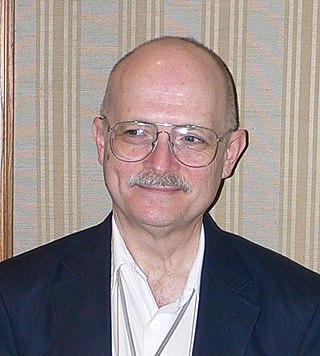
Vernor Steffen Vinge was an American science fiction author and professor. He taught mathematics and computer science at San Diego State University. He was the first wide-scale popularizer of the technological singularity concept and among the first authors to present a fictional "cyberspace". He won the Hugo Award for his novels A Fire Upon the Deep (1992), A Deepness in the Sky (1999), and Rainbows End (2006), and novellas Fast Times at Fairmont High (2001) and The Cookie Monster (2004).

The Forever War (1974) is a military science fiction novel by American author Joe Haldeman, telling the contemplative story about human soldiers fighting an interstellar war against an alien civilization known as the Taurans. It won the Nebula Award in 1975 and the Hugo and Locus awards in 1976. Forever Free (1999) and Forever Peace (1997) are, respectively, direct and thematic sequel novels. The novella A Separate War (1999) is another sequel of sorts, occurring simultaneously with the final portion of The Forever War. Informally, the novels comprise The Forever War series; the novel also inspired a comic book and a board game. The Forever War is the first title in the SF Masterworks series.

Joan D. Vinge is an American science fiction author. She is known for her Hugo Award–winning novel The Snow Queen and its sequels, her series about the telepath named Cat, and her Heaven's Chronicles books. She also is the author of The Random House Book of Greek Myths (1999).
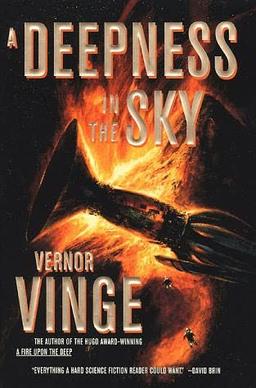
A Deepness in the Sky is a science fiction novel by American writer Vernor Vinge. Published in 1999, the novel is a loose prequel to his earlier novel A Fire Upon the Deep (1992). The title is coined by one of the story's main characters in a debate, in a reference to the hibernating habits of his species and to the vastness of space.

"The Steadfast Tin Soldier" is a literary fairy tale by Hans Christian Andersen about a tin soldier's love for a paper ballerina. The tale was first published in Copenhagen by C.A. Reitzel on 2 October 1838 in the first booklet of Fairy Tales Told for Children. New Collection. The booklet consists of Andersen's "The Daisy" and "The Wild Swans". The tale was Andersen's first not based upon a folk tale or a literary model. "The Steadfast Tin Soldier" has been adapted to various media including ballet and animated film.
Christopher Golden is an American writer.
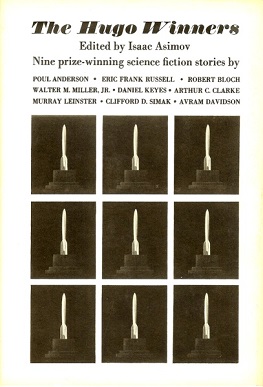
The Hugo Winners was a series of books which collected science fiction and fantasy stories that won a Hugo Award for Short Story, Novelette or Novella at the World Science Fiction Convention between 1955 and 1982. Each volume was edited by American writer Isaac Asimov, who wrote the introduction and a short essay about each author featured in the book. Through these essays, Asimov reveals personal anecdotes, which authors he's jealous of, and how other writers winning awards ahead of him made him angry. Additionally, he discusses his political beliefs, friendships, and his affinity for writers of "hard science fiction". The first two volumes were collected by Doubleday into a single book, which lacks a publishing date and ISBN.
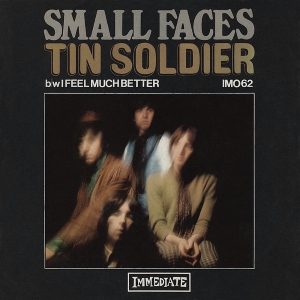
"Tin Soldier" is a song released by the English rock band Small Faces on 2 December 1967, written by Steve Marriott. The song peaked at number nine in the UK singles chart and number 38 in Canada. It has since been covered by many other notable rock artists.

Windhaven is a science fiction fix-up novel by American writers George R. R. Martin and Lisa Tuttle. The novel is a collection of three novellas compiled and first published together in 1981 by Timescape Books. It was published as a mass market paperback in 1982 by Pocket Books. Both editions featured cover art by Vincent Di Fate. It was later reprinted by Bantam Spectra in hardcover in 2001, and paperback in 2003 and 2012, with cover art by Stephen Youll. The novel was also published in paperback form in the UK by New English Library in 1982 and Gollancz in 1988.

"The Shobies' Story" is a 1990 science fiction novella by American writer Ursula K. Le Guin, describing the story of the first human crew to participate in a newly invented faster-than-light mode of space travel. It was first published in the anthology Universe 1 and subsequently appeared in A Fisherman of the Inland Sea published by Harper Prism in 1994.

Fairy Tales Told for Children. New Collection is a collection of ten fairy tales by Hans Christian Andersen. The tales were published in a series of three installments by C. A. Reitzel in Copenhagen, Denmark between October 1838 and December 1841.

The 1978 Annual World's Best SF is an anthology of science fiction short stories edited by Donald A. Wollheim and Arthur W. Saha, the seventh volume in a series of nineteen. It was first published in paperback by DAW Books in May 1978, followed by a hardcover edition issued in August of the same year by the same publisher as a selection of the Science Fiction Book Club. For the hardcover edition the original cover art of Jack Gaughan was replaced by a new cover painting by Richard Powers. The paperback edition was reissued by DAW in 1983 under the variant title Wollheim's World's Best SF: Series Seven, this time with cover art by Graham Wildridge. A British hardcover edition was published by Dennis Dobson in May 1980 under the variant title The World's Best SF 5.
The Steadfast Tin Soldier is a ballet choreographed by George Balanchine to Bizet's Jeux d'enfants, based on Hans Christian Andersen's 1838 fairytale of the same name of the love between a tin soldier and a paper-doll ballerina. The ballet premiered on July 30, 1975, at the Saratoga Performing Arts Center, with New York City Ballet's Patricia McBride and Peter Schaufuss.
"A Momentary Taste of Being" is a science fiction novella written by Alice Bradley Sheldon, published under the pseudonym James Tiptree, Jr. in the 1975 anthology The New Atlantis and Other Novellas of Science Fiction.

"The Gold at the Starbow's End" is a science fiction novella by American writer Frederik Pohl. Originally published in the March 1972 issue of Analog Science Fiction/Science Fact, it was nominated for both the 1973 Hugo Award for Best Novella and the 1973 Nebula Award for Best Novella. It did win the 1973 Locus Award for Best Novella.
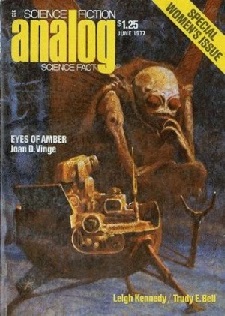
"Eyes of Amber" is a science fiction short story by American writer Joan D. Vinge. It was first published as the cover story for the June 1977 issue of Analog Science Fiction and Fact.

The New Women of Wonder: Recent Science Fiction Stories by Women About Women is an anthology of short stories, novelettes, novellas, and a poem edited by Pamela Sargent. The collection reprinted work by contemporary female science fiction authors, originally published from 1967 to 1977. It was published in 1978.
A tin soldier is a miniature figure of a toy soldier.
References
- ↑ Joan D. Vinge Bibliography. "Joan D. Vinge's Bibliography". Archived from the original on 2011-08-06. Retrieved 2013-06-28..
- ↑ Eyes of Amber and Other Stories, Signet, 1979, page 246.
- ↑ Eyes of Amber and Other Stories, Signet, 1979, pages 246-247.